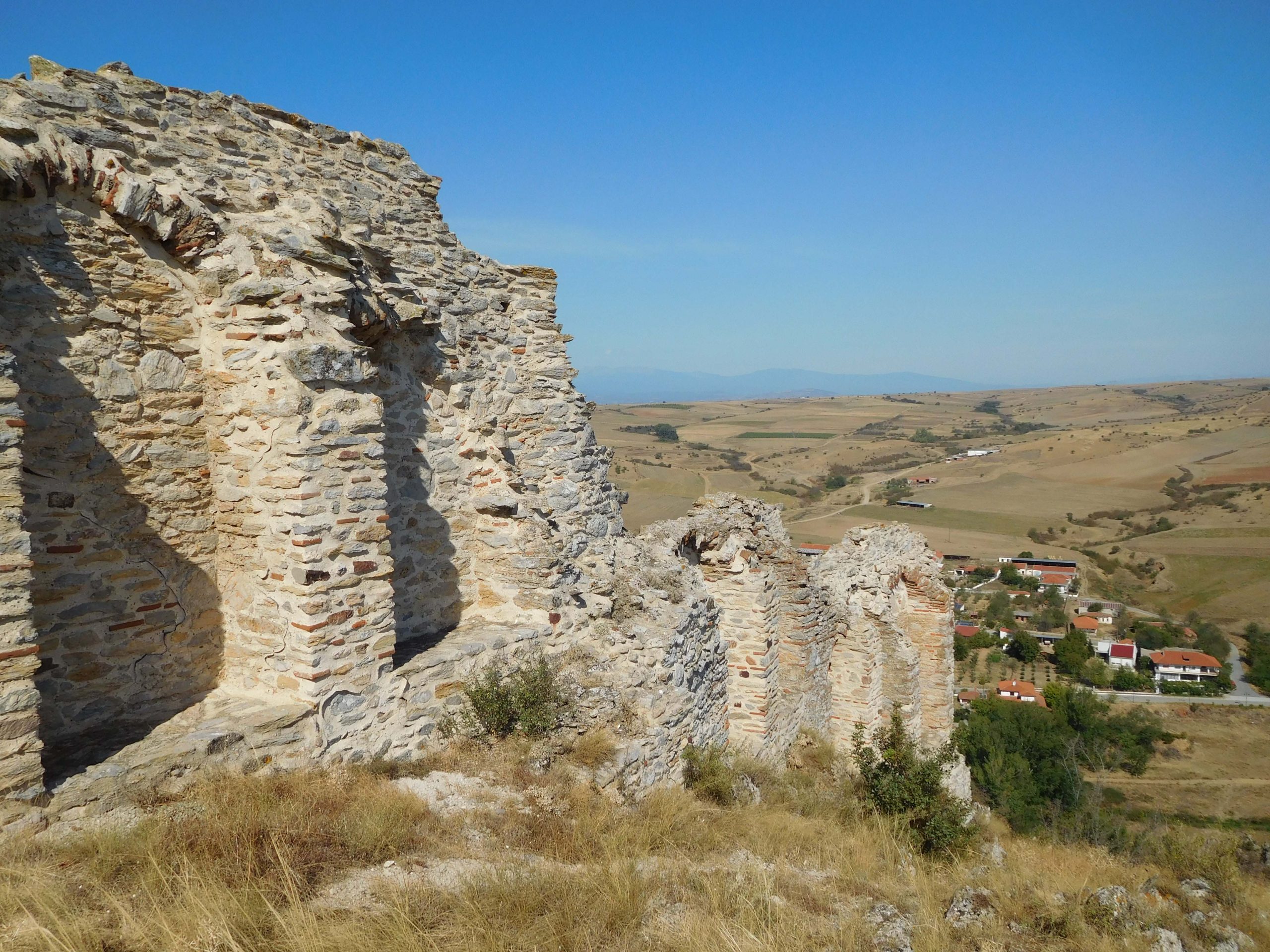This website uses cookies so that we can provide you with the best user experience possible. Cookie information is stored in your browser and performs functions such as recognising you when you return to our website and helping our team to understand which sections of the website you find most interesting and useful.

Byzantine fortress of Gynaikokastro
12 kms SW of the city of Kilkis, one can see the famous Byzantine fortress of Gynaikokastro. It was founded by the emperor Andronikos III Palaiologos between the years 1328-1341, in order to strengthen the northern defense of the co-regent city of Thessaloniki. Its name derives from its strong walls that, according to the legend, rendered its defense possible even by women. In 1342, after the short-lived Republic imposed on Thessaloniki by the Zealots movement, the castle gave shelter to the aristocrats of Thessaloniki and their leader and governor of the city, Theodoros Synadinos.
The fortress occupied an area of about 25 acres and the perimeter of its walls measure 614 m. Access to the fortress was provided by two gates, a main one on the SE side, not surviving today, and a smaller gate leading to the citadel. The citadel is located at the NE part of the fortress and a two-story tower is to be found at its highest point. Its first floor was equipped with a chapel, where a fragment of a building inscription with the Palaiologian monogram comes from. The ground floor preserves a double cistern.
The fortress fell, like the rest of Macedonia, to the Ottomans around 1383-1389. Folk tradition recorded the myth of its fall in the story of Maroulia, the commander’s wife, who fell defending the castle. The name Gynaikokastro was preserved in its Turkish translation as “Avret Hisar”, providing in fact the name to the entire administrative region (vilayet) of Central Macedonia until the early 20th century. From the early 17th century it gradually fell into decline, following the transfer of the trade fair – which to that time took place there – to the financially developing town of Kilkis. Αt the eastern foot of the hill lies a three-aisled basilica, which was constructed around 1835, with the reuse of some spolia of a middle-byzantine church. Nowadays, the church is honored, arbitrary, in the name of the neomartyr from Gynaikokastron St Ioannis Nannos (+1802).
The contemporaneus Gynaikokastron is inhabited by refugees, who came from Pontos region after 1924, and by a few families of Sarakatsanoi.
